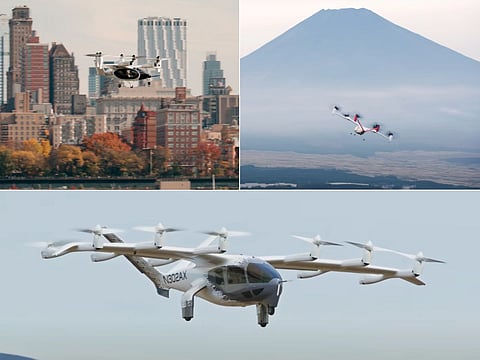5 nations team up to take air taxis to new heights: What it means
eVTOL: Future of flight takes a leap forward with the National Aviation Authority Network

For the first time in 70 years, five nations have united to align on certification for a new class of aircraft, including "air taxis", also known as vertical take-off and landing vehicles (VTOL), or advanced air mobility.
The move by the "Five Eyes" nation on Tuesday marks a historic step for the future of flying: VTOLs form a whole new class of aircraft and are about to change how we think about the skies.
What have they agreed upon?
This five-country alliance have banded together to have a shared roadmap for certifying Advanced Air Mobility (AAM) aircraft to ensure safety. The move could also help advance innovation in the eVTOL sector while allowing these countries to keep their edge in next-generation aviation tech.
The five countries are:
US
UK
Canada
Australia, and
New Zealand
Together, they have joined forces under the banner of the National Aviation Authority (NAA) Network.
It's a coup for the five nations, like forming an alliance of watchdogs and drivers of the upcoming air taxi economy.
It remains unclear, though, if Japan and South Korea are also joining the network.
Their mission: Make the skies friendlier, quieter, cleaner — without having to invent five separate rulebooks to certify them.
It also aims to drive innovation and cement their manufacturing edge in eVTOL technology.
Why now?
Because the world is on the cusp of flying differently. The jet age gave us long-haul flying in a packed tube.
Air taxi, on the other hand, could offer something closer to teleportation — daily flights across town in electric aircraft that take off like helicopters and cruise like aeroplanes.
But here’s the plot twist: while doing that, they were also cozying up to regulators around the world, pushing for harmonised standards that wouldn’t strand their aircraft in bureaucratic no-fly zones.
Unified certification
Enter the NAA Network — formed in 2022 with a big-picture goal: stop reinventing the certification wheel five times over.
The June 17 announcement is the pay-off: a shared framework that means if an aircraft is cleared in one member country, it can swoop in to the others with far less red tape.
Joby’s already boarding
Joby’s been showing up everywhere from New York rooftops to Japan’s mountaintops.
They flew at South Korea’s K-UAM Grand Challenge and are getting ready to test in Dubai this summer (because why not add a flying car to the skyline of the future?).
They’ve hosted curious regulators from Canada, the UK, Japan, and Australia at their California HQ — because seeing is believing, especially when it’s an aircraft that takes off like a drone and lands like a butterfly.
As Joby CEO JoeBen Bevirt said at the Paris Air Show, “Today’s milestone underpins our approach to bringing our aircraft to markets around the world.”
Translation: we’re not just building cool aircraft — we’re building bridges between countries to fly them everywhere.
So what now?
The five-nation plan doesn’t just signal approval of air taxi tech — it shows a rare, powerful alignment of global vision.
The same air taxis that ferry commuters in LA could soon be gliding over Sydney Harbour, buzzing across New Zealand’s hills, or giving UK traffic jams a reason to sweat.
Thanks to the NAA Network, the revolution won’t be grounded for long, held back by bureaucratic nightmare— it’ll be certified, streamlined, and ready for takeoff across the globe.
It could usher in a new age of flight, an upgrade of our sky commute.
Sign up for the Daily Briefing
Get the latest news and updates straight to your inbox



